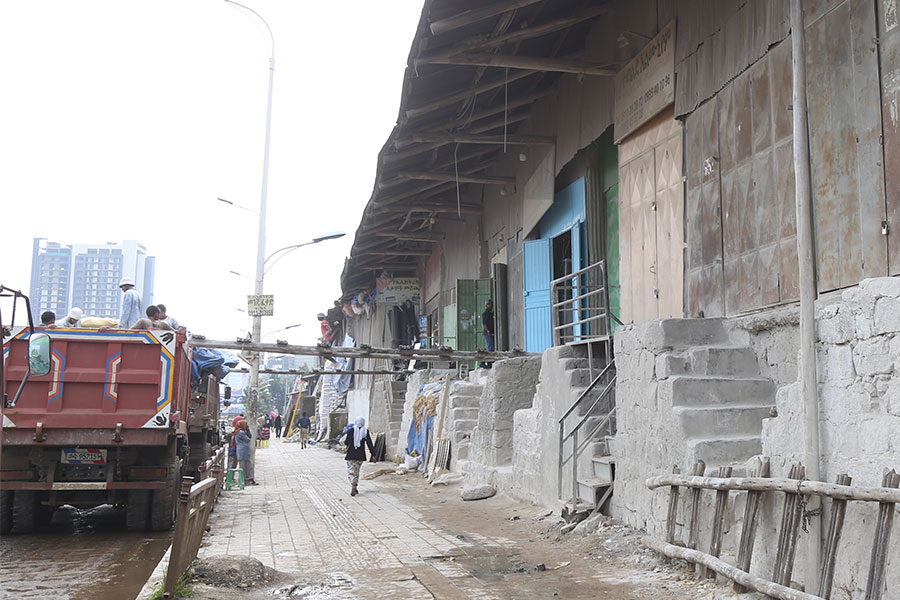
Fortune News | Apr 30,2021
The turbulent cement industry will see another significant change, with plants gearing up for upward price adjustments. Managers of cement companies, who have been disgruntled by the surge in the price of inputs, are awaiting the completion of an assessment undertaken to gauge their cost structures.
The assessment is to be undertaken by experts from the Chemical & Construction Inputs Industry Development Institute, who want to validate the wholesale prices proposed by the cement companies. While factory-gate prices will only be officially disclosed after the conclusion of the assessment, prices are expected to increase between 20pc and 30pc of the 400 Br a quintal available now, according to industry sources.
Once the officials at the Ministry of Trade & Industry have endorsed the assessment result, the readjusted prices will be imposed on the 13 cement plants, which have the combined capacity to produce 8.5 million tonnes of cement a year. Among the plants, Derba Cement has the largest production capacity of 2.5 million tonnes, followed by Messebo Cement and Dangote, each having the capacity to produce 200,000tn less.
Annual demand is believed to have surpassed 12 million tonnes.
"We're in the final stage of the assessment," said Samuel Halala, director-general of the Institute. "The results will be announced in the weeks ahead."
The measure comes at a time when there is a shortfall in production due to maintenance work at some plants, and the closure of Messebo Cement, one of the three largest cement producers, due to the war in Tigray Regional State. Rare is also an occurrence in the cement market where the retail price is showing a slump. A quintal of cement is sold for below 650 Br, a significant drop from the 900 Br registered at the end of last month after the government loosened the price cap on the industry.
The price adjustment is also hoped to ease financial burdens on factories, which complain that profit margins have fallen.
“Every input we use, including our energy costs, which account for over 60pc of our expenses, ballooned, especially in the last two years,” said Fitsum N. Demissie, CEO of East African Trading House and board member of the Ethiopian Cement Manufacturers Association, representing National Cement.
Cement plants use coal as a prime source of energy. Even though it was sourced almost wholly from abroad for decades, the last two years saw many local coal miners joining, enabling the plants to fulfil over half of their annual demand through the domestic market, with a plan to substitute fully this year. Ethiopia incurs a quarter of a billion dollars annually to import coal, an amount which has been more than halved in the last two years.
Accounting for 25pc of production cost, another item on the input list is limestone, a resource cement plants had enjoyed free concessions to up until a few years ago. The quarries developed by cement companies were redirected to youth groups since 2016, a measure precipitated by protests in Oromia Regional State during the same period.
The plants have secured 85 million dollars in letters of credit for maintenance after receiving priority status from the National Bank of Ethiopia (NBE), to import machine parts and replacements.
According to industry insiders, the adjustment in prices proposed by the plants is expected, considering the increase in the price of inputs across the board.
Tewordos Shimeles is the chief executive officer of Tabu Construction, a grade one contractor. He finds the price adjustment cement companies proposed reasonable and applauds the authorities for their efforts to assess the situation before making a decision. However, he worries increase in the price of cement is bound to drive the cost of construction up.
"Project owners, including the government, will be forced to make price revisions," said Tewodros.
In the absence of sturdy regulatory oversight in the market, this will unleash speculative forces to gouge the market, says Haben Abraha, a construction engineer with a decade of experience.
Managers of cement plants are not as apprehensive. They hope to see the high margins that go to brokers get squeezed.
"The highest margin was going to suppliers and brokers," says an executive of one of the cement plants. "If the price increases, it is only their margins that would fall."
PUBLISHED ON
Aug 21,2021 [ VOL
22 , NO
1112]

Radar | Jan 21,2023

Verbatim | Apr 08,2023

Fortune News | Feb 03,2024

Fortune News | Aug 17,2019

Fortune News | Jul 30,2022

Dec 22 , 2024 . By TIZITA SHEWAFERAW
Charged with transforming colossal state-owned enterprises into modern and competitiv...

Aug 18 , 2024 . By AKSAH ITALO
Although predictable Yonas Zerihun's job in the ride-hailing service is not immune to...

Jul 28 , 2024 . By TIZITA SHEWAFERAW
Unhabitual, perhaps too many, Samuel Gebreyohannes, 38, used to occasionally enjoy a couple of beers at breakfast. However, he recently swit...

Jul 13 , 2024 . By AKSAH ITALO
Investors who rely on tractors, trucks, and field vehicles for commuting, transporting commodities, and f...

Jul 5 , 2025
Six years ago, Ethiopia was the darling of international liberal commentators. A year...

Jun 28 , 2025
Meseret Damtie, the assertive auditor general, has never been shy about naming names...

Jun 21 , 2025
A well-worn adage says, “Budget is not destiny, but it is direction.” Examining t...

Jun 14 , 2025
Yet again, the Horn of Africa is bracing for trouble. A region already frayed by wars...